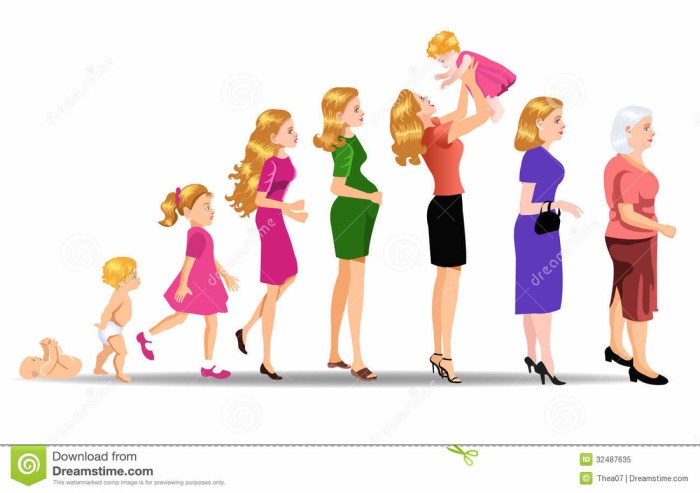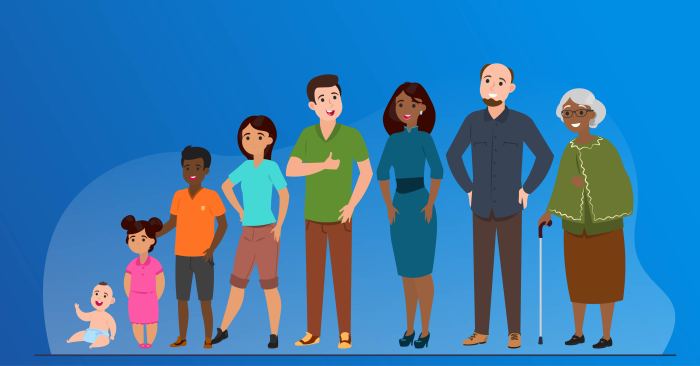Human development life span view 9th edition – Welcome to the ninth edition of Human Development Life Span View, a seminal work that has shaped our understanding of human development across the entire lifespan. This comprehensive guide delves into the intricacies of physical, cognitive, social, and emotional development, providing a holistic perspective on the human journey from infancy to old age.
Drawing upon cutting-edge research and the latest theoretical frameworks, this edition offers a comprehensive examination of the factors that influence individual differences in development, the role of context and culture, and the ethical considerations involved in studying human development. Whether you are a student, researcher, or practitioner, this essential resource will equip you with the knowledge and insights necessary to navigate the complexities of human development.
Human Development Life Span Perspective

The human development life span view is a comprehensive approach to understanding human development that emphasizes the importance of studying development across the entire life span, from conception to death. This perspective recognizes that development is a lifelong process that is influenced by a complex interplay of biological, psychological, and social factors.
The life span perspective has its roots in the work of early developmental psychologists such as Jean Piaget and Lev Vygotsky. Piaget proposed that cognitive development occurs in a series of stages, each of which is characterized by a unique way of thinking about the world.
Vygotsky emphasized the role of social interaction in cognitive development, arguing that children learn through their interactions with more knowledgeable others.
In recent years, the life span perspective has been expanded to include a focus on positive development and resilience. Researchers have found that even in the face of adversity, many people are able to adapt and thrive. This research has led to the development of new interventions and programs that are designed to promote positive development throughout the life span.
Physical and Cognitive Development: Human Development Life Span View 9th Edition

Physical and cognitive development are two of the most important aspects of human development. Physical development refers to the changes in the body that occur from conception to death. Cognitive development refers to the changes in thinking, learning, and memory that occur over the same period.
Physical development is influenced by a variety of factors, including genetics, nutrition, and environment. Cognitive development is also influenced by a variety of factors, including genetics, environment, and education.
Both physical and cognitive development are essential for human functioning. Physical development allows us to move, interact with our environment, and perform daily tasks. Cognitive development allows us to learn, think, and solve problems.
Physical Development
- Prenatal development: The period from conception to birth.
- Infancy: The period from birth to 1 year of age.
- Toddlerhood: The period from 1 to 3 years of age.
- Preschool: The period from 3 to 5 years of age.
- Middle childhood: The period from 6 to 11 years of age.
- Adolescence: The period from 12 to 18 years of age.
- Early adulthood: The period from 19 to 40 years of age.
- Middle adulthood: The period from 40 to 65 years of age.
- Late adulthood: The period from 65 years of age to death.
Cognitive Development
- Sensorimotor stage (birth to 2 years): Infants learn about the world through their senses and motor skills.
- Preoperational stage (2 to 7 years): Children begin to use language and symbols to represent their thoughts.
- Concrete operational stage (7 to 11 years): Children become more logical and able to think about concrete objects and events.
- Formal operational stage (11 years and up): Adolescents and adults develop the ability to think abstractly and hypothetically.
Social and Emotional Development

Social and emotional development are two of the most important aspects of human development. Social development refers to the changes in the way that we interact with others. Emotional development refers to the changes in the way that we experience and express our emotions.
Social and emotional development are both influenced by a variety of factors, including genetics, environment, and culture. Social development is also influenced by our interactions with our parents, siblings, peers, and other people in our lives.
Both social and emotional development are essential for human functioning. Social development allows us to form relationships, cooperate with others, and participate in society. Emotional development allows us to understand and express our emotions, and to cope with stress and adversity.
Social Development, Human development life span view 9th edition
- Infancy: Infants begin to develop social skills, such as smiling and interacting with others.
- Toddlerhood: Toddlers begin to develop a sense of self and to interact with others in more complex ways.
- Preschool: Preschoolers begin to develop friendships and to learn how to cooperate with others.
- Middle childhood: Middle childhood is a time of great social development. Children begin to develop a sense of morality and to understand the rules of society.
- Adolescence: Adolescence is a time of significant social change. Adolescents begin to develop their own identities and to become more independent from their parents.
- Early adulthood: Early adulthood is a time of continued social development. Young adults begin to form intimate relationships and to establish their own careers.
- Middle adulthood: Middle adulthood is a time of stability and consolidation. Adults continue to develop their relationships and careers.
- Late adulthood: Late adulthood is a time of reflection and wisdom. Adults often become more involved in their communities and in their relationships with their children and grandchildren.
Emotional Development
- Infancy: Infants experience a wide range of emotions, such as joy, sadness, anger, and fear.
- Toddlerhood: Toddlers begin to develop a sense of self and to understand their own emotions.
- Preschool: Preschoolers begin to develop empathy and to understand the emotions of others.
- Middle childhood: Middle childhood is a time of great emotional development. Children begin to develop a sense of morality and to understand the rules of society.
- Adolescence: Adolescence is a time of significant emotional change. Adolescents begin to develop their own identities and to become more independent from their parents.
- Early adulthood: Early adulthood is a time of continued emotional development. Young adults begin to form intimate relationships and to establish their own careers.
- Middle adulthood: Middle adulthood is a time of stability and consolidation. Adults continue to develop their relationships and careers.
- Late adulthood: Late adulthood is a time of reflection and wisdom. Adults often become more involved in their communities and in their relationships with their children and grandchildren.
Questions and Answers
What are the key concepts of the human development life span view?
The human development life span view emphasizes the interconnectedness of development across the entire lifespan, the influence of multiple factors on development, and the importance of understanding development within its cultural and historical context.
How has the life span perspective influenced research and practice in human development?
The life span perspective has led to a shift towards more longitudinal research designs, a greater focus on individual differences, and the development of interventions that support positive development throughout the lifespan.
What are the major physical and cognitive changes that occur throughout the human life span?
Physical changes include growth in height and weight, changes in body composition, and the development of motor skills. Cognitive changes include the development of language, memory, attention, and problem-solving abilities.
What are the major social and emotional changes that occur throughout the human life span?
Social changes include the development of relationships with family, friends, and peers, as well as the development of social roles and identities. Emotional changes include the development of self-regulation, empathy, and emotional intelligence.
What are the major contexts and influences that shape human development throughout the life span?
Contexts and influences include family, culture, socioeconomic status, education, and healthcare. These factors can have a significant impact on development, both positive and negative.